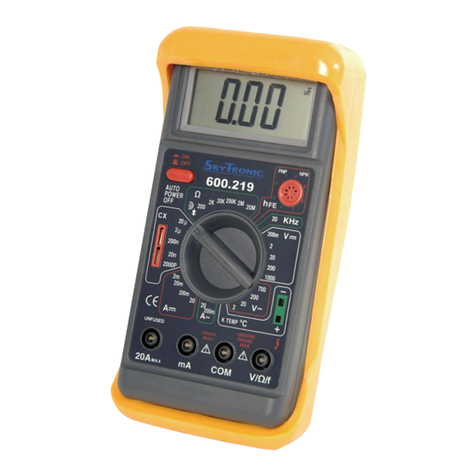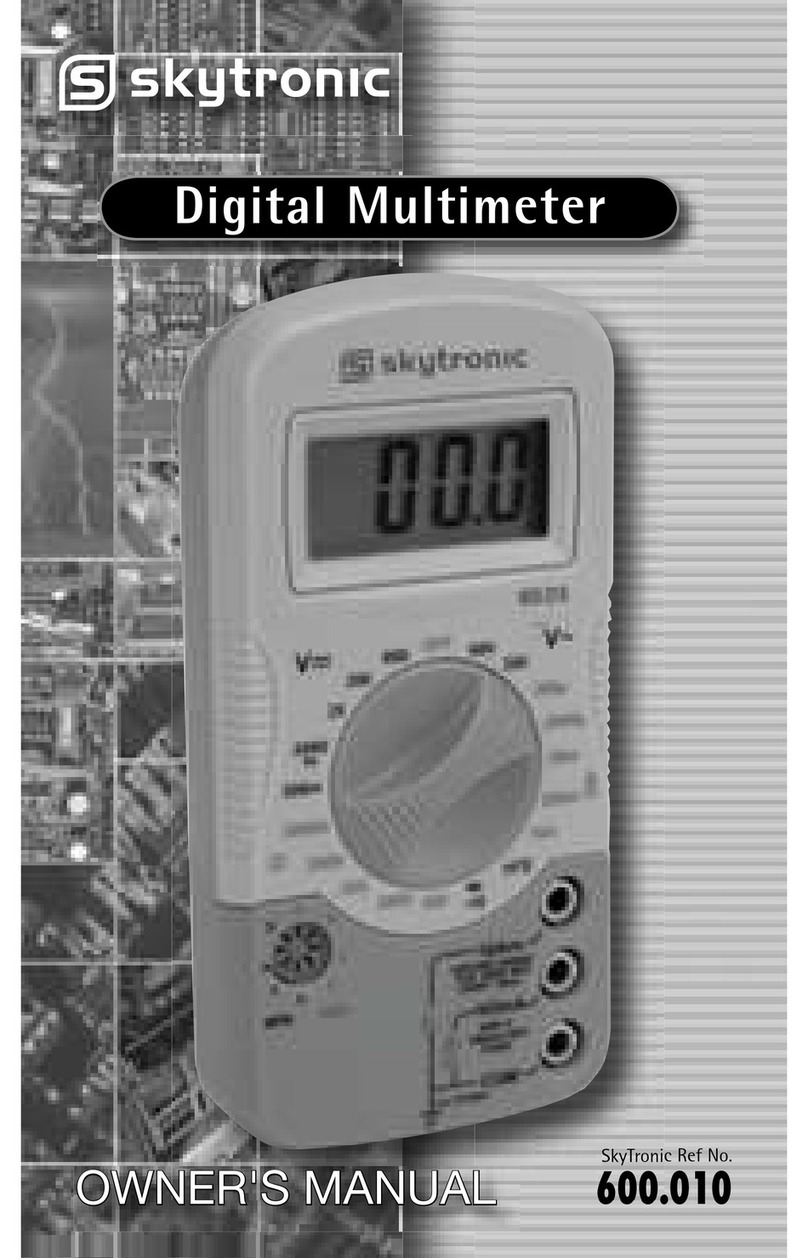Weerstandsmetingen
1) Verbind het zwarte meetsnoer met de 'COM' aansluiting en
het rode meetsnoer met de V/Ω/F aansluiting. N.B. de rode
meetpen is positief (plus).
2) Zet de grote keuzeschakelaar in de stand Ω. Verbind de
meetsnoeren met de te testen weerstand en lees vervolgens
de gemeten weerstandswaarde af.
Doorverbindings- of diode test
1) Verbind het zwarte meetsnoer met de 'COM' aansluiting
en het rode meetsnoer met de V/Ω/F aansluiting. Zet de
draaischakelaar in de stand /en druk op de rode
toets met hetzelfde symbool om te kiezen voor diodetest
of doorverbindingstest.
2) Bij de doorverbindingstest geeft de meter een pieptoon
wanneer de weerstand kleiner is dan 40 Ohm.
3) Gelijkrichtdiodes en signaaldiodes kunnen getest worden
door het rode meetsnoer met de anode en het zwarte
meetsnoer met de kathode te verbinden. Op de display is dan
de voorwaartse spanningsval over de diode te zien. (bij
silicium diodes ca. 0,6V) Met het rode meetsnoer op de
kathode en het zwarte meetsnoer op de anode moet een
goede diode volledig blokkeren. In de display is dan 'OL'
zichtbaar.
Transistortest (hFE bepaling=versterkingsfactor)
1) Kies met de draaischakelaar de stand hFE.
2) Plaats de te testen transistor met de aansluitdraden in de
juiste openingen van het blauwe testvoetje. De meter is
geschikt voor het testen van zowel NPN als PNP transistoren.
3) Op de display is dan de hFE (versterkingsfactor) van de
transistor te zien. (basisstroom 10µA, collector/emitter
spanning 2,8 V)
VERVANGEN VAN DE BATTERIJ OF ZEKERING
Wanneer het symbool " " in de display verschijnt, raakt de
batterij uitgeput. Open de behuizing door de twee schroeven aan de
achterzijde los te draaien. Vervang de batterij en eventueel een
defecte zekering en schroef de achterzijde weer vast.






























